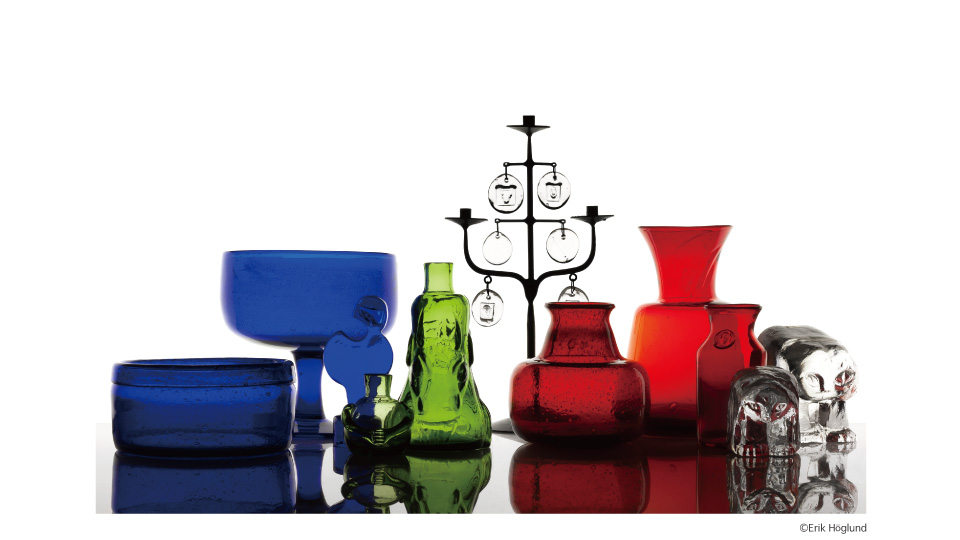
エリック・ホグラン展
| 会 期 | 2014年10月 1日(水) - 2014年10月20日(月) |
|---|---|
| 時 間 | 11:00 - 20:00 |
| 場 所 | 8/ ART GALLERY/ Tomio Koyama Gallery |
| 料 金 | 入場無料 Admission Free |
オープニング:10月1日(水)18:00 ー 20:00
Opening: October 1 (Wed.) 18:00 ー 20:00
北欧ガラス工芸の革命児 エリック・ホグラン展
エリック・ホグランは、1932年生まれのガラス作家です。ストックホルムのKonstfack(現国立芸術工芸デザイン大学)で彫刻を学んだ後、1953年から1973年までBODA社でデザイナーとして活躍。洗練されたデザインが好まれた当時、北欧の伝統に南米の手工芸などを取り入れつつ生まれたプリミティブな作風で、ガラス工芸に新しい風を吹き込みました。作品に、より温かみや人の手を感じさせるために、炉の燃料に様々な素材を試したり、おがくずの中にガラスを投げ込んだり、ホグランは様々な実験も行ないました。型押しした動物などのモチーフと、力強い色遣い、職人の間では敬遠されがちだった気泡、歪みなどは、彼のトレードマークとなっています。
Erik Höglund was a glass artist born in 1932. After studying sculpture at Konstfack in Stockholm (now known as the University College of Arts, Crafts and Design), he pursued a successful career as a designer at BODA glassworks from 1953 until 1973. At a time when highly refined designs were popular, his primitive-style works adopting South American craftsmanship into Nordic tradition breathed new life into the art and craft of glass-making.
He experimented with ways to convey warmth and the traces of the maker’s hands in his works, such as trying many different firing fuels and even throwing the glass into sawdust. Embossed animal motifs, strong use of color, the air bubbles and warps in the glass that were avoided by other craftsmen, have all become his trademarks.
In 1957 he received the Lunning prize, the most respected award amongst Nordic designers. Winning the prize at the age of 25 made him the youngest winner amongst such other prominent prize winners as Hans J. Wegner, Tapio Wirkkala, Kaj Franck and Timo Sarpaneva. After receiving the honor, he continued seeking new means of expression and materials. From 1973 he worked mainly as a fine artist until his death in 1998 - by which time he had worked with such institutions as PUKEBERG, the Pilchuck Glass School and Studioglas Stromshyttan. There are over 150 of his objets made using glass, iron, copper and other materials in public collections both within and outside Sweden.
Cooperation: ELEPHANT、craft_one








